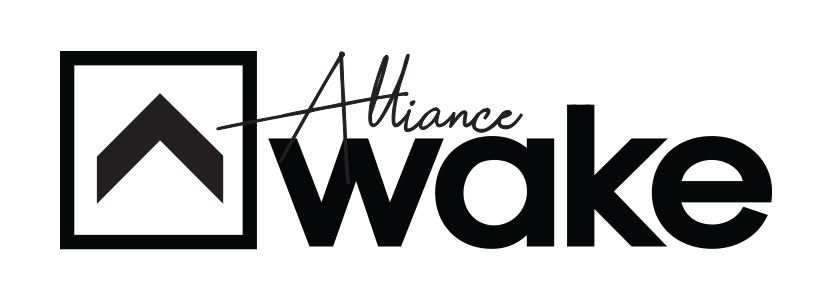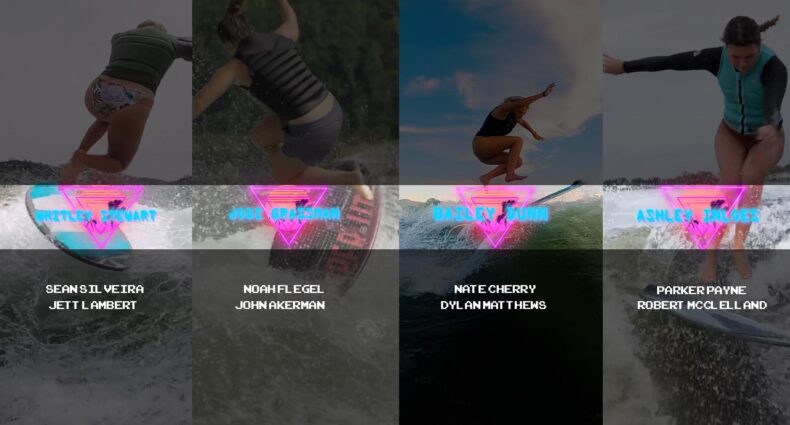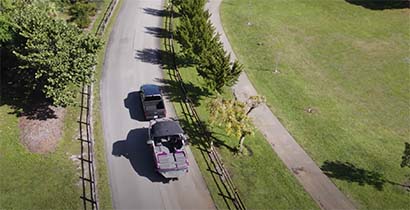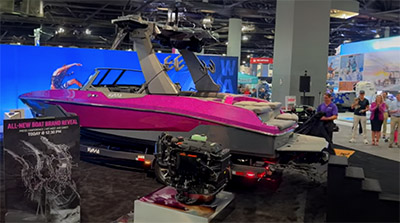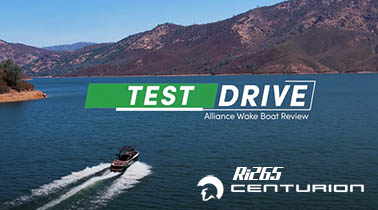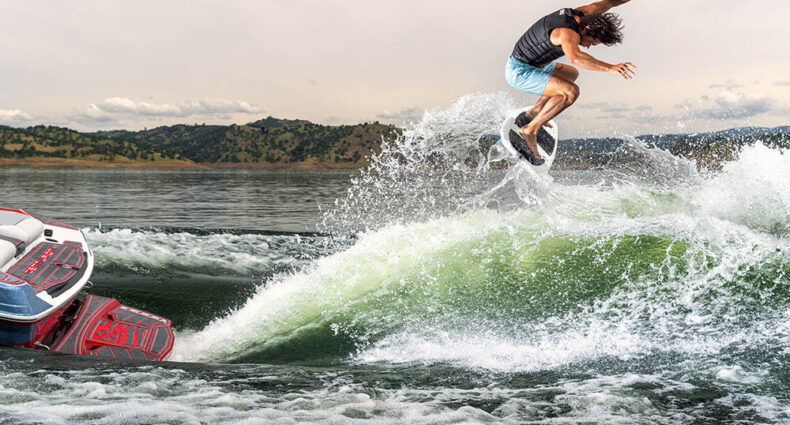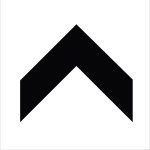INSIDE – JEFF PAGE / FOUNDER INLAND SURFER
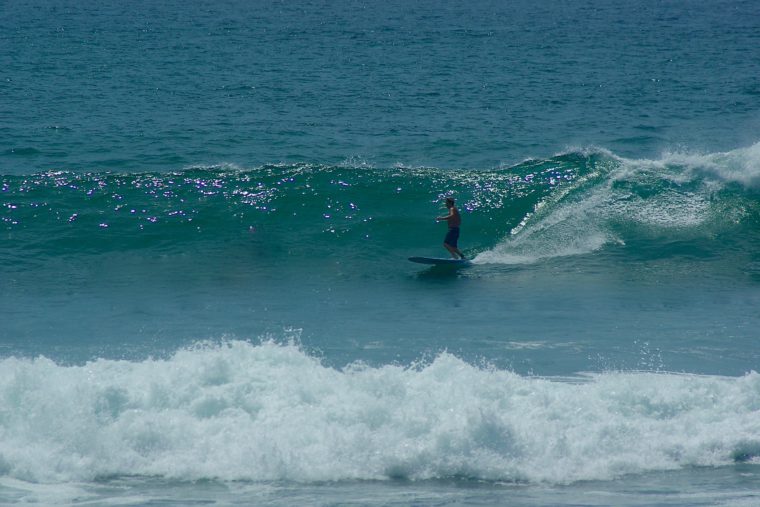
Alliance Wake: How long have you been surfing behind boats and at what point did you think manufacturing wakesurf specific boards could work as a viable business in our market?
Jeff Page: I started surfing behind boats in the 1970’s. We wanted to surf and being inland we had to take a longboard and start riding behind boats. I wakesurfed the entire time and it went from fun to a driving passion. In the late 1990’s I started designing boat-wave sized boards and prototyping with a company in California, which later became the Blue Lake and Green Room boards. It was quite a learning experience as we were all using direct drive boats. Through design I learned the boards had too much rocker and the rails were too soft. That was when I knew the inland surfing experience would dictate technology, shapes, and materials that were different from ocean surfing. I knew in 2000 that if we were having this much fun, the watersports industry was going to be blown away.
AW: What year was the first board shaped and how many boards did Inland Surfer initially offer? How many boards do you offer now?
JP: The first boards were being shaped in 1999 and my initial production boards were sold in 2000 on Lake Sammamish. I was working hard to get to market first and this proved difficult as at the time there was essentially no EVA Foam for traction, I remember those boards were all sold with Hula Deck. Now we have multiple traction options, exotic materials and technology across all 26 production models in 2017.
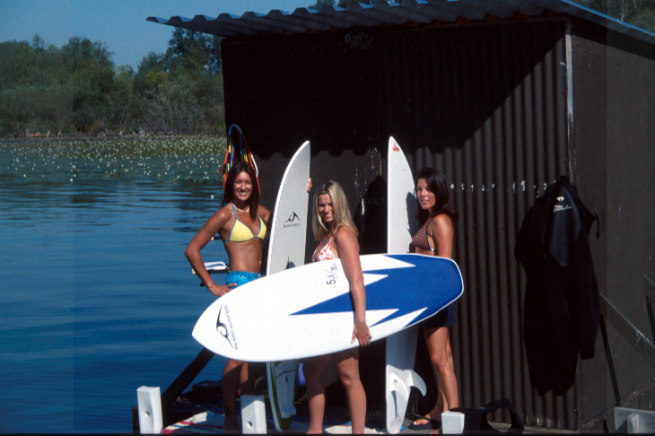
AW: What makes Inland Surfer different from some of the major wakeboard brands that also offer wakesurf boards in their lineups?
JP: I would say they are reactive. I’ve watched a resurgence in boating after the economic collapse in 2008. Wakesurfing has brought life back to recreational boating and even with today’s alternative propulsion we are seeing jet and forward drive engine boats pull wakesurfers. The traditional wakeboard companies are all scrambling to make wakesurfers to gain market share now.
Aside from Jerry Price of Shred Stixx the major brands back then only knew how to make a compression-molded wakeboard design. So their initial efforts were essentially just wakeboards in a wakesurfer shape. Now only in 2017, we’re starting to see the correct materials and manufacturing process, fin placement, rail definition and other characteristics for surfing a boat wave that I discovered almost two decades ago.
AW: What are some of the most important elements of a wakesurf board’s shape that the general public should know?
JP: Cosmetics are just that, cosmetics. It comes down to the fundamentals: how sharp the rails are, the tail shape, how the board releases water and drives speed down the line, and rail to rail. The elements that go into a wakesurfer are far different than a traditional surfboard. Most of the time you are floating and paddling on a surfboard, a wakesurfer, it’s ridden by the entire crew all summer, hundreds of hours of usage or more. That’s why the materials are critical for someone to get the most for their money. That was why we introduced WoodLoc tech, which is a wood veneer on the deck and hull of the board, real wood. I remember a specific conversation at the airport after Surf Expo with an industry heavyweight, “That’s not real wood.” Yes, yes it is. Our shapes are complemented with a tremendous amount of wake boat driven technology for durability and performance. Our shapes are complemented with a tremendous amount of wake boat driven technology for durability and performance.

AW: What’s the craziest boat you’ve ever surfed behind?
JP: Bill Baxter’s 60-foot yacht on Lake Washington. It’s all surfing: ocean, boats, wave pools, but the waves are all different. At Mavericks you have a different board than at Pipe – the yacht, that was craziest, but it was just another wave, another session, but that was crazy.
AW: What do you think has been the biggest factor in the growth of wakesurfing the last five or so years?
JP: After beating our heads and only having a single boat manufacturer realize wakesurfing for so many years we’ve watched every single inboard towboat manufacturer jump on the bandwagon. This has ignited the sport. Regarding wakeboarding consumers, they’re getting older, but still enjoy watersports with their family. With that the boat manufacturers have taken notice. But the participation of all towboats is the biggest factor by far.
AW: At the end of the day, margins, market share, sales aside; what was your overall end goal when you started Inland Surfer?
JP: To never stop surfing. To bring surfing to the inland marketplace. It’s a lifestyle and we wanted to bring surfing to everyone.

